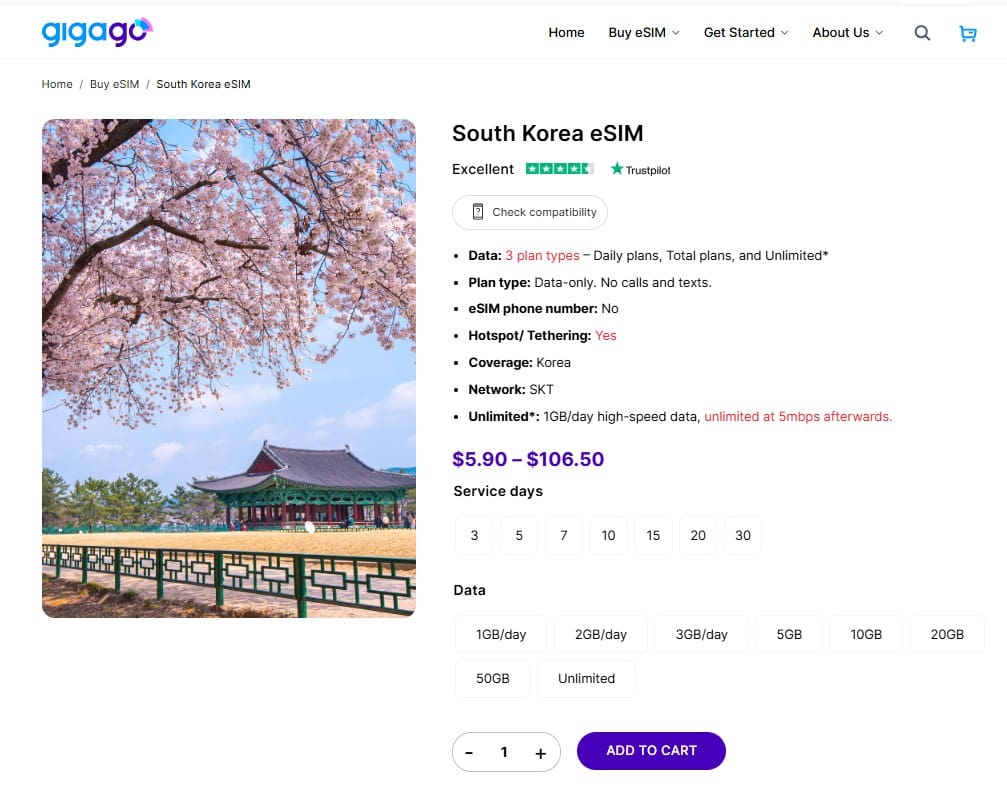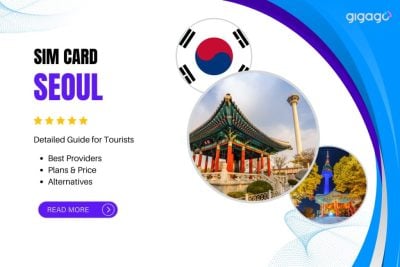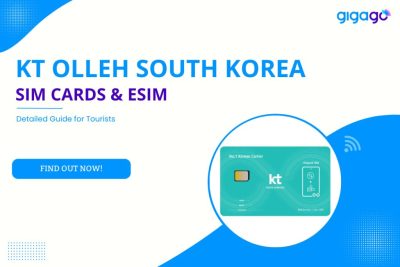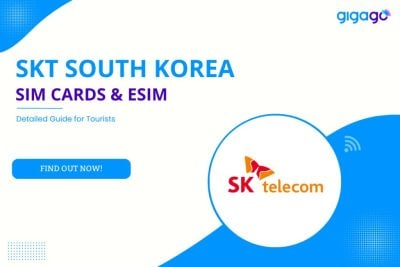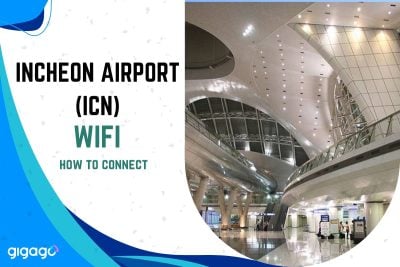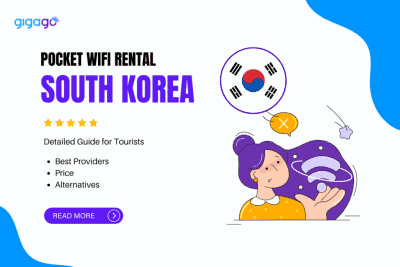From comparing carriers to finding the best deals and exploring eSIM alternatives, we’ve got everything covered to keep you online without the hassle. Let’s dive into the essentials!
Buying LG U+ South Korea SIM cards & eSIMs: Detailed Guide
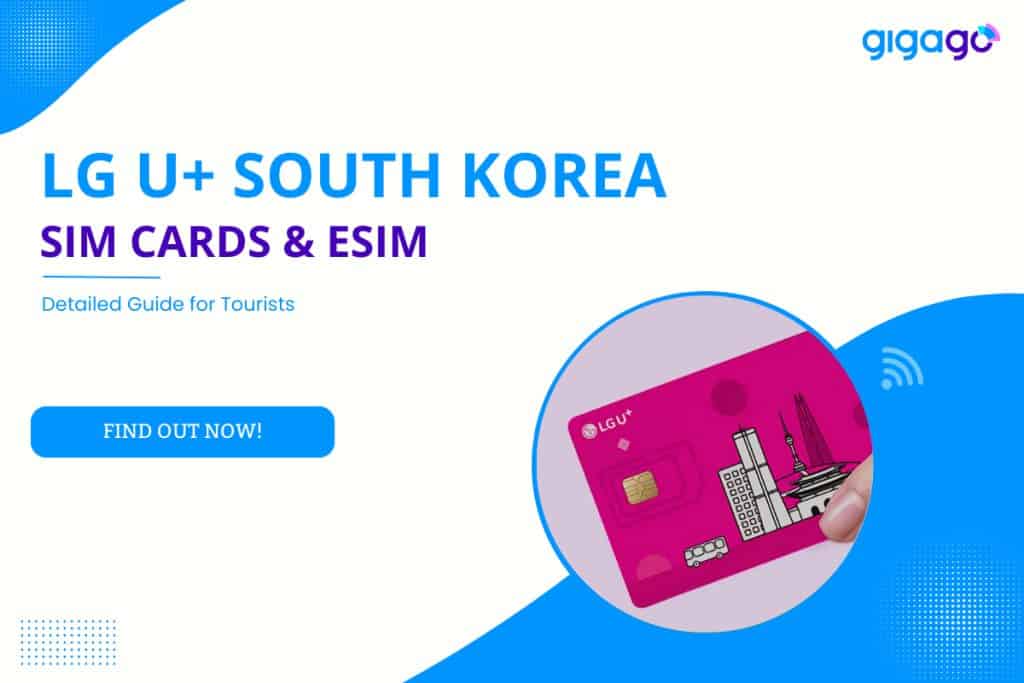
LG U+ South Korea SIM cards offer good connectivity, fast internet speeds, and widespread coverage, making them ideal for exploring the country. In this guide, you’ll learn everything about LG U+, from its network coverage and speed to the best SIM card options, prices, and where to buy them. Whether you’re considering a physical SIM or an eSIM, this detailed guide will help you make the right choice for your travel needs.
In this article
I. Overview of LG U+ South Korea – What you need to know
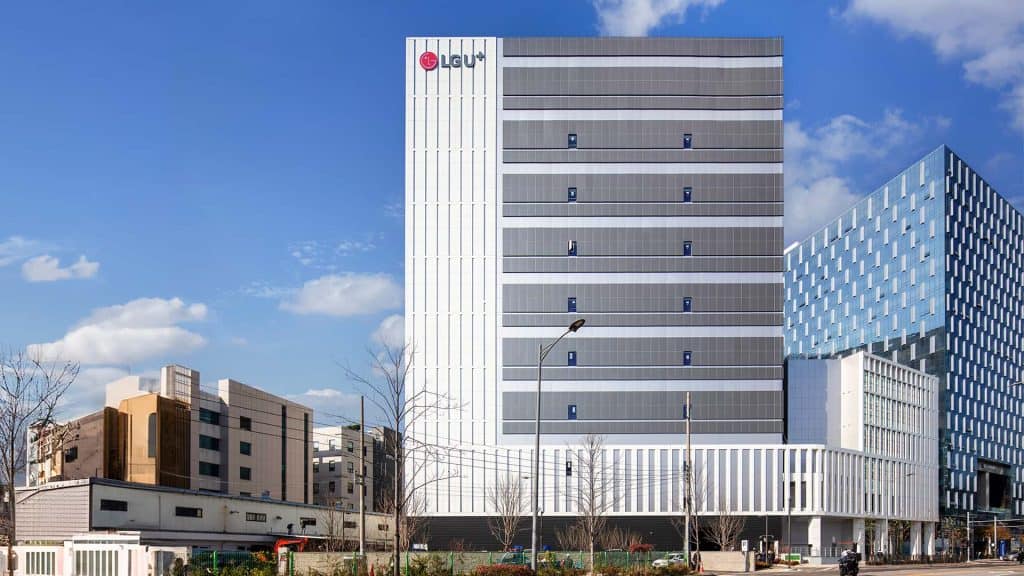
LG U+ was founded in 1996 and re-branded after its 2010 merger with LG Dacom and Powercom. Now it serves more than 20 million mobile customers.
It launched the world’s first nationwide commercial 5 G network in 2019 and completed a Stand-Alone 5 G overlay in November 2024. Holding roughly 23 % market share behind SK Telecom and KT, LG U+ competes on fast upload speeds, generous tourist bundles and English-language customer support.
II. How Good is LG U+ coverage?
LG U+’s LTE network reaches 99.9 % of Korea’s population, while its 5G service now covers about 93 %.
If your trip is confined to cities, KTX corridors, airports, and mainstream tourist spots, LG U+ performs on par with, or slightly faster than, SKT and KT at a lower price point.
In mountain parks like Seoraksan, Jirisan, DMZ border hills, signal can drop to no service because LG U+ no longer runs 3G. So if you travel there, prepare offline maps before you hike.
Military rules limit network equipment near the Demilitarised Zone, so coverage around lookout points such as Dora-san is patchy. Expect your LTE signal to fade in and out. A few older highway and rail tunnels lack signal repeaters. You will lose service while inside but regain it as soon as you exit.
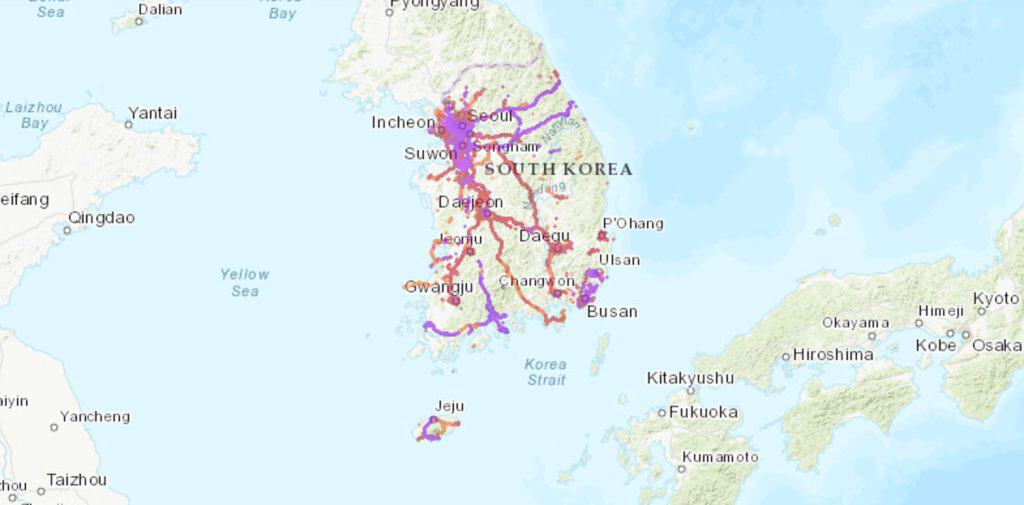
III. LG U+ Speed in South Korea
LG U+ offers good internet speeds in South Korea. Opensignal’s April 2025 tests give a clear picture of how fast LG U+ really is.
- On 5G you can expect about 429 Mbps download, 43.8 Mbps upload, and 18 ms latency.
- On LTE the average is 78–110 Mbps download and 18–25 Mbps upload.
If you use up the high-speed data that comes with your tourist plan, the connection drops to 5 Mbps. That slower speed is still fine for maps, chat apps, and basic web browsing.
IV. Types of LG U+SIM Card Options for Tourists
There are two main types of LG U+ SIM card options for tourists:
- Physical SIM Card: A traditional plastic SIM card that you insert into your device.
- eSIM: A digital SIM that can be activated by scanning a QR code, eliminating the need for a physical card.
Comparison Table
| Criteria | Physical SIM Card | eSIM |
| Activation | Requires visiting a counter or retailer to activate. | Activate instantly by scanning a QR code. |
| Convenience | Must physically handle and insert into the device. | No physical card needed; activation is remote. |
| Compatibility | Works with all unlocked SIM-enabled devices. | Only works with eSIM-compatible devices. |
| Purchase Location | Available at airports and stores. | Can be purchased and activated online. |
| Additional Features | May include a transportation card or special offers. | May include a transportation card or special offers. |
Both options provide reliable connectivity, but the eSIM is more convenient for tourists. It offers instant activation without the need to visit a store, making it the best choice for travelers with eSIM-compatible devices.
V. LG U+ South Korea SIM cards for Tourists & Prices
LG U+ offers one flexible “Data + Voice” product that you can customise in three steps:
- Pick how many days you need (1 – 30).
- Decide whether you want LTE or 5G speeds.
- Add a voice-call bundle (optional).
- Incoming calls and texts are always free
What you get by default
- 3 GB of high-speed data every day: When the day’s 3 GB runs out, you still have unlimited data at 5 Mbps—enough for maps, chat and social media.
- A Korean mobile number that starts with 010.
- Free incoming calls and texts.
- Free T-Money transit card on plans of 3 days or longer.
Pricing
- LTE plans run ₩6,500 for 1 day up to about ₩66,000 for 30 days (add roughly ₩2,000–₩3,000 if you choose 5 G).
- Voice add-ons start at ₩5,500 for 20 min, ₩11,000 for 40 min, and ₩16,500 for 60 min; larger bundles appear in the menu.
Pay-as-you-go rates after the bundle
- Domestic outgoing calls: ₩ 264 per minute.
- Domestic outgoing SMS: ₩ 55 per message (taken from your call balance).
- International SMS: ₩ 165 per message.
VI. Where to buy LG U+ South Korea SIM cards for tourists?
As a tourist, you can purchase an LG U+ SIM card in South Korea through the following methods:
- Online Reservation: Pre-order a SIM card or eSIM via the LG U+ official website. After payment, visit an LG U+ Customer Center upon arrival to complete the process.
- Airport Counters: LG U+ has service counters at major airports:
- Incheon International Airport:
- Terminal 1: Arrivals Hall, near Gates 6-7 and 10-11.
- Terminal 2: Arrivals Hall, near Gates 4-5.
- Gimhae International Airport: Arrivals Hall, near Gates 2-3.
- Operating hours are typically from 6:00 AM to 10:00 PM.
- Incheon International Airport:
- Retail Stores: Buy at authorized retailers or convenience stores displaying the LG U+ logo.
- LG U+ Stores: Visit flagship stores in major cities for purchase and activation.
For added convenience, consider using an eSIM, which allows for immediate activation without a physical SIM card. Ensure your device supports eSIM functionality before choosing this option.
VII. Gigago eSIM for Korea – A Viable Alternative to LG U+ SIM Cards
Gigago offers a flexible and convenient eSIM solution for travelers in South Korea. Unlike LG U+, Gigago’s eSIM operates on SK Telecom’s (SKT) network, renowned for its extensive coverage and reliable performance across the country.
For South Korea, Gigago provides a variety of data plans to suit different needs:
- Daily Data Plans: Choose from 1 GB, 2 GB, or 3 GB per day.
- Total Data Plans: Options include 5 GB, 10 GB, 20 GB, or 50 GB for the entire duration of your trip.
- Unlimited Plan: Enjoy 1 GB of high-speed data per day, followed by unlimited usage at 5 Mbps.
Plans are affordable, ranging from $5.90 to $106.50, depending on the data allowance and duration, which can be as short as 3 days or as long as 30 days.
Whether you’re traveling solo, with family, or in a group, Gigago’s versatile options make it easy to stay connected, no matter the length of your trip or the number of devices you need to connect.
VIII. How to top up LG U+ South Korea SIM Card?
When your LG U+ prepaid balance is low, you can recharge using these methods:
- Online with Credit/Debit Card – Quickly top-up through the provider’s website.
- Convenience Stores – Purchase a prepaid voucher and apply it to your SIM.
- ATMs – Withdraw cash and recharge at designated counters.
- Self-Service Kiosks – Available at airports and public areas for quick recharging.
Online top-up is the fastest method, but vouchers provide more flexibility. Ensure your SIM stays active throughout your trip with these easy options!
IX. FAQs about LG U+ South Korea SIM Cards
Where can I buy an LG U+ South Korea SIM card?
You can purchase them online, at airport counters like Incheon and Gimhae, LG U+ flagship stores, or authorized retailers. Online reservations with pickup upon arrival and kiosks at airports are also convenient options for tourists.
Which LG U+ SIM card plan is best for a short trip?
For short trips, the 7-day plan (KRW 32,000) is recommended as it offers sufficient data and coverage. If your trip is even shorter, the 5-day plan (KRW 25,000) provides great value and saves money.
How do I top up my LG U+ South Korea SIM card?
You can top up online using your credit/debit card, buy prepaid vouchers from convenience stores, or recharge at ATMs and kiosks in public areas. Online top-ups are the fastest, while vouchers and kiosks are good for flexibility.
Is LG U+ coverage reliable in South Korea?
LG U+ offers excellent coverage, covering 99% of the population, with strong 5G and LTE networks in cities like Seoul, Busan, and Incheon. However, coverage may be limited in remote mountainous areas.
